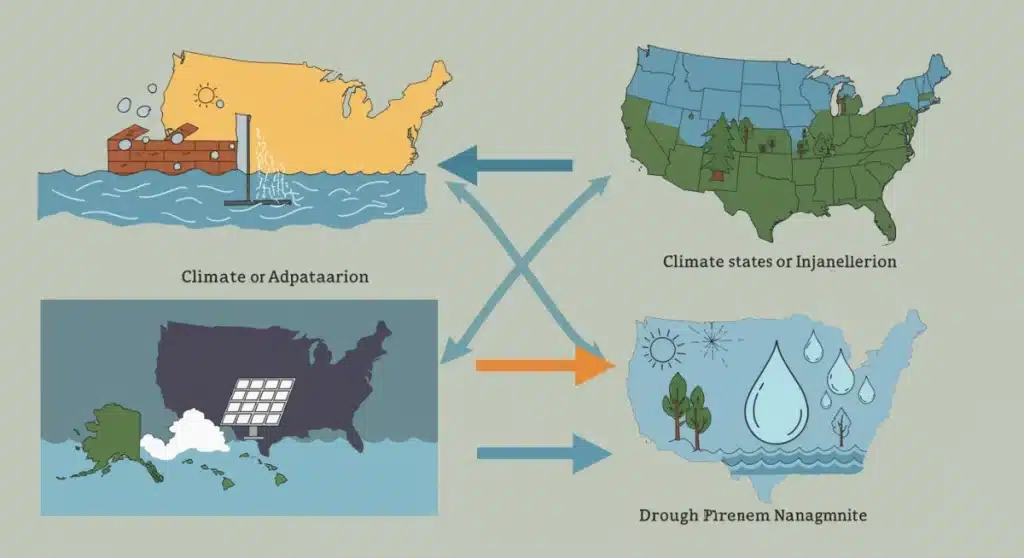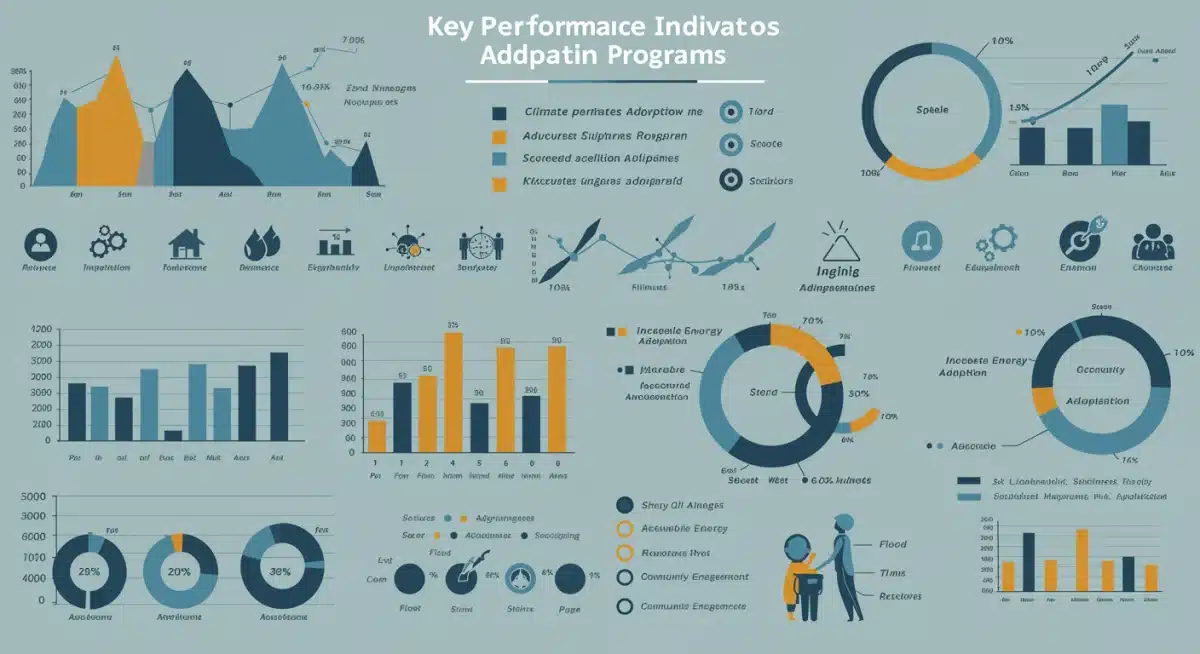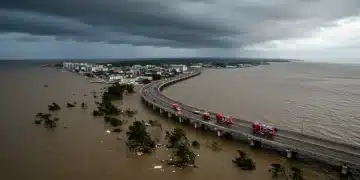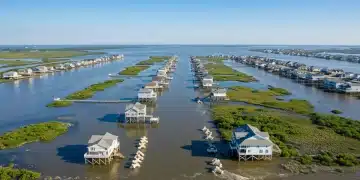Evaluating US Climate Adaptation Programs: Success Rates

Recent analyses are now evaluating the success rates of 4 different U.S. state-level climate adaptation programs,
providing crucial insights into their effectiveness amidst escalating climate challenges.
As extreme weather events become more frequent and intense, understanding what makes these programs successful—or not—is more critical than ever.
This comparative look offers a timely perspective on state-led initiatives to build resilience.
California’s Coastal Resilience Strategy: A Mixed Record
California, with its extensive coastline and vulnerability to sea-level rise and coastal erosion, has long been a frontrunner in climate adaptation planning.
The state’s comprehensive Coastal Resilience Program aims to protect communities and ecosystems through a blend of natural infrastructure and policy interventions.
However, recent evaluations indicate a mixed record of success, with some initiatives demonstrating significant progress while others face considerable hurdles.
The program’s ambitious goals include restoring wetlands, constructing living shorelines, and implementing setback policies for new developments.
Early results show that investments in wetland restoration have yielded ecological benefits, enhancing biodiversity and providing natural buffers against storm surges.
Yet, the pace of implementation for some larger infrastructure projects and the political will to enforce stringent land-use regulations remain persistent challenges.
Funding Mechanisms and Implementation Speed
- Prop 68 Bonds: Significant funding has come from Proposition 68, a statewide bond measure, which has accelerated numerous projects.
- Permitting Delays: Complex environmental permitting processes often slow down critical adaptation projects.
- Local Resistance: Some communities resist new building codes or managed retreat strategies due to economic concerns.
Despite these obstacles, California’s program serves as a vital case study for other coastal states.
Its emphasis on science-based decision-making and stakeholder engagement provides a robust framework, even as practical application reveals the complexities of large-scale climate adaptation.
The state continues to refine its approach, incorporating lessons learned from ongoing projects and seeking more streamlined pathways for critical resilience efforts.
Florida’s Resilient Florida Program: Addressing Hurricane Impacts
Florida, frequently in the path of powerful hurricanes and grappling with chronic flooding, launched the Resilient Florida Program to bolster its defenses against climate-related disasters.
This program focuses heavily on infrastructure upgrades, flood mitigation, and protecting critical assets.
Initial assessments highlight its proactive approach to funding and project selection, though long-term success hinges on sustained commitment and equitable distribution of resources.
The Resilient Florida Program allocates substantial state funds to local governments for projects like seawalls, stormwater improvements, and elevation of vulnerable structures.
According to the Florida Department of Environmental Protection, over $1 billion has been allocated in the past two years, funding hundreds of projects across the state.
These investments are beginning to show promise in reducing flood risks in some areas, particularly in urban centers that have historically experienced severe inundations.
Community Engagement and Equity Concerns
While the program demonstrates strong leadership in infrastructure, critics point to potential disparities in how projects are prioritized.
There’s an ongoing debate about whether vulnerable, low-income communities receive adequate attention compared to more affluent areas.
Ensuring equitable access to adaptation benefits is a critical component for the program’s overall success and social legitimacy.
- Project Selection Criteria: Projects are selected based on vulnerability assessments and cost-benefit analyses.
- Funding Accessibility: Smaller, less resourced communities sometimes struggle with the application process for state funds.
- Public Awareness: Efforts are underway to increase public understanding of climate risks and adaptation strategies through educational campaigns.
Massachusetts’ Municipal Vulnerability Preparedness (MVP) Program: Bottom-Up Success
Massachusetts has achieved considerable success with its Municipal Vulnerability Preparedness (MVP) program, which empowers local communities to identify their climate hazards, assess vulnerabilities, and develop tailored adaptation plans.
This bottom-up approach has fostered strong local ownership and has been praised for its effectiveness in translating state-level goals into actionable local strategies.
The MVP program provides grants to cities and towns to conduct vulnerability assessments and to implement priority adaptation projects.
Since its inception, over 90% of Massachusetts communities have participated, earning them official MVP designation.
This widespread engagement has resulted in a diverse portfolio of projects, ranging from culvert upgrades to coastal dune restoration, demonstrating the program’s adaptability to varied local needs.
Key Strengths of the MVP Model
- Community-Led Planning: Local stakeholders drive the identification of risks and solutions.
- Capacity Building: Provides technical assistance and training to municipal staff.
- Flexible Funding: Grants support a wide array of project types, from planning to implementation.
The program’s success lies in its ability to build local capacity and foster a sense of shared responsibility for climate resilience.
According to a recent report by the state’s Executive Office of Energy and Environmental Affairs, MVP-designated communities have seen a significant increase in local climate planning and investment.
This model offers valuable lessons for other states looking to decentralize adaptation efforts and empower local action.
North Carolina’s Coastal Resilience Blueprint: Data-Driven Strategies
North Carolina, frequently impacted by hurricanes and inland flooding, has embarked on developing a Coastal Resilience Blueprint, a data-driven initiative aimed at identifying and prioritizing natural and nature-based solutions.
This program stands out for its emphasis on scientific modeling and collaborative planning across multiple agencies.
While still in its early stages of widespread implementation, its foundational approach shows strong potential for long-term success.
The Blueprint leverages advanced geospatial data and hazard mapping to pinpoint areas most vulnerable to climate impacts.
This information then guides investment in projects such as oyster reef restoration, living shorelines, and floodplain protection.
The goal is to enhance the state’s natural defenses, which are often more cost-effective and environmentally beneficial than traditional hard infrastructure.

Challenges in Long-Term Funding and Public Buy-in
Despite its robust scientific backing, securing consistent long-term funding and ensuring broad public buy-in remain critical challenges for North Carolina.
The effectiveness of nature-based solutions often takes longer to manifest compared to engineered solutions, requiring sustained political and financial commitment.
- Science-Policy Integration: Strong links between scientific research and policy development are central to the Blueprint.
- Interagency Collaboration: Success relies on effective coordination among state agencies, local governments, and non-profits.
- Measuring Ecosystem Services: Quantifying the benefits of nature-based solutions can be complex but is crucial for demonstrating value.
The state’s commitment to a data-informed approach provides a strong foundation for its adaptation efforts.
As the Blueprint moves from planning to full-scale implementation, its ability to secure diverse funding streams and communicate the value of natural infrastructure to the public will be paramount for its ultimate success.
Comparative Analysis: Strengths and Weaknesses Across States
Evaluating the success rates of 4 different U.S. state-level climate adaptation programs reveals a spectrum of approaches and outcomes.
California’s comprehensive yet complex strategy contrasts with Florida’s infrastructure-heavy focus.
Massachusetts exemplifies a successful bottom-up, community-driven model, while North Carolina is building a strong foundation with data-driven natural solutions.
A key takeaway is that no single approach fits all.
States facing diverse climate threats and possessing different governance structures must tailor their programs accordingly.
However, common themes emerge regarding factors influencing success.
Common Factors for Program Success
- Robust Funding: Consistent and adequate financial resources are indispensable for project implementation.
- Strong Governance: Clear leadership, interagency coordination, and effective policy frameworks are vital.
- Community Engagement: Local buy-in and participation significantly enhance program effectiveness and sustainability.
- Data-Driven Decisions: Utilizing scientific data and vulnerability assessments ensures resources are directed to the most critical areas.
- Adaptive Management: Programs that can learn from experience and adjust strategies over time tend to be more resilient themselves.
Conversely, common weaknesses include bureaucratic hurdles, insufficient long-term funding, and challenges in addressing socioeconomic inequities in adaptation planning.
Many programs are still grappling with how to measure the long-term efficacy of adaptation measures, especially those with ecosystem benefits that accrue over decades.
This highlights the need for standardized metrics and ongoing monitoring to truly evaluate success.
Lessons Learned and Future Directions in Climate Adaptation
The ongoing efforts to assess the effectiveness of these diverse state-level programs offer invaluable lessons for climate adaptation nationwide.
One critical lesson is the importance of integrating adaptation planning into broader development and economic strategies, rather than treating it as an isolated environmental concern.
This holistic approach can unlock greater resources and foster more sustainable outcomes.
Another key insight is the need for sustained political will and public education.
Adaptation projects often require significant upfront investment and may not yield immediate, visible returns.
Educating the public and policymakers about the long-term benefits and cost-effectiveness of proactive adaptation is essential for maintaining support.
Emerging Best Practices
Future directions in climate adaptation are likely to emphasize several emerging best practices:
- Nature-Based Solutions: Increased focus on ecological approaches that provide multiple co-benefits, such as carbon sequestration and habitat creation.
- Social Equity Integration: Prioritizing vulnerable populations and ensuring adaptation benefits are equitably distributed.
- Regional Collaboration: Moving beyond state lines to address climate impacts that transcend political boundaries, such as watershed management or regional migration patterns.
- Technological Innovation: Leveraging new technologies like AI for predictive modeling, remote sensing, and real-time monitoring of climate impacts and adaptation measures.
The path to climate resilience is complex and multifaceted, but the experiences of these four U.S. states provide a robust foundation for learning and improvement.
Their successes and challenges underscore the dynamic nature of climate adaptation and the continuous need for innovation, collaboration, and sustained effort.
| Program Focus | Key Characteristic |
|---|---|
| California Coastal Resilience | Comprehensive but faces implementation challenges and permitting delays. |
| Florida Resilient Florida | Infrastructure-heavy, strong funding, but questions on equitable resource distribution. |
| Massachusetts MVP | Bottom-up, community-driven success with high local engagement and flexible funding. |
| North Carolina Coastal Blueprint | Data-driven, natural solutions focus, with strong scientific backing but needs sustained funding. |
Frequently Asked Questions About Climate Adaptation Programs
Climate adaptation programs aim to reduce vulnerability to climate change impacts, enhance community resilience, and protect natural and built environments. They typically involve strategies like infrastructure improvements, ecosystem restoration, policy adjustments, and public awareness campaigns to cope with current and future climate shifts.
Success is often measured through a combination of metrics, including reduced economic losses from climate events, increased protection for critical infrastructure, improved ecosystem health, and enhanced community preparedness. Qualitative assessments of policy implementation and stakeholder engagement also play a crucial role in evaluating program effectiveness.
Common challenges include securing consistent, long-term funding, navigating complex permitting processes, overcoming political resistance to certain measures, ensuring equitable distribution of resources to all communities, and effectively communicating the long-term benefits of adaptation to the public and policymakers. Bureaucratic hurdles can also impede progress.
Community engagement is crucial because local residents and stakeholders possess intimate knowledge of their specific vulnerabilities and needs. Their participation ensures that adaptation plans are relevant, accepted, and effective. It also builds local capacity and fosters a sense of ownership, leading to more sustainable and resilient outcomes for communities.
Nature-based solutions, like wetland restoration or living shorelines, leverage natural processes to reduce climate risks. They offer multiple benefits, including flood protection, improved water quality, habitat creation, and carbon sequestration, often at a lower cost than traditional engineered solutions. They are increasingly recognized as vital components of comprehensive adaptation strategies.
Looking Ahead: The Evolving Landscape of Climate Resilience
The ongoing evaluation of U.S. state-level climate adaptation programs underscores a critical reality: climate change demands dynamic, adaptive responses.
As states continue to refine their strategies, the focus will increasingly shift towards integrating social equity, leveraging technological advancements, and fostering greater regional and inter-state collaboration.
The lessons from California, Florida, Massachusetts, and North Carolina will undoubtedly inform national policy and investment, shaping how communities across the nation build resilience against an uncertain future.
Continuous monitoring and transparent reporting of success metrics will be paramount to ensure that adaptation efforts are not just implemented, but are truly effective in safeguarding lives and livelihoods.





